Honouring tradition through beadwork at Cedar and Pine Design
Ktunaxa artist Darcy Roshau creates intricate beadwork and murals to honour her community and culture.
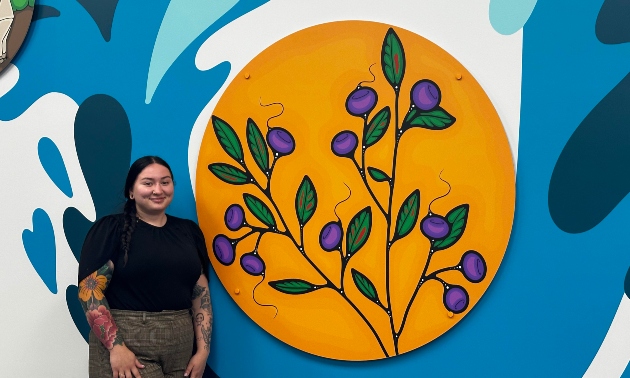
— Photo courtesy Darcy Roshau
Darcy Roshau, owner of Cedar and Pine Design in Cranbrook B.C., brings the timeless art of Ktunaxa beadwork into a contemporary light through her beautiful and deeply rooted designs.
Inspired by her community’s support and Ktunaxa cultural traditions, Darcy has grown her business from a local passion to a meaningful venture that celebrates Indigenous artistry. With an emphasis on authentic cultural expression, each of her pieces tells a story, whether through intricate floral patterns or custom creations that honor personal and ancestral connections. In our conversation, Darcy shares the journey of Cedar and Pine Design, the craft’s traditional significance, and her commitment to expanding the reach and understanding of Indigenous art.
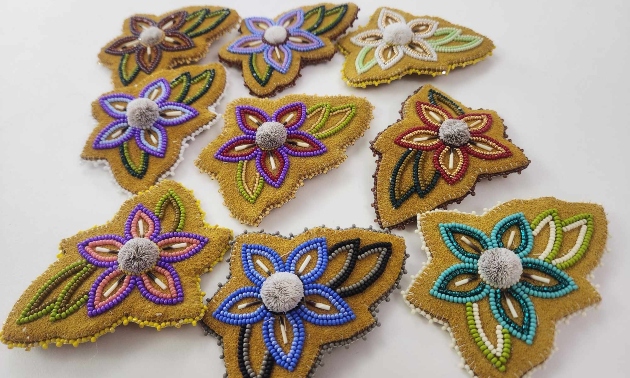
- Photo courtesy Darcy Roshau
What inspired you to start Cedar and Pine Design, and how has the business evolved since it was known as Mountain Arts?
I think what inspired me most to start Cedar and Pine Design was my community, and all of my supporters. Back in 2020, I was beading more often what with being home most of the time, and I had a lot of people interested in my work. It really boosted my confidence to see how many people wanted to purchase what I had created, I just kept beading and it took off from there.
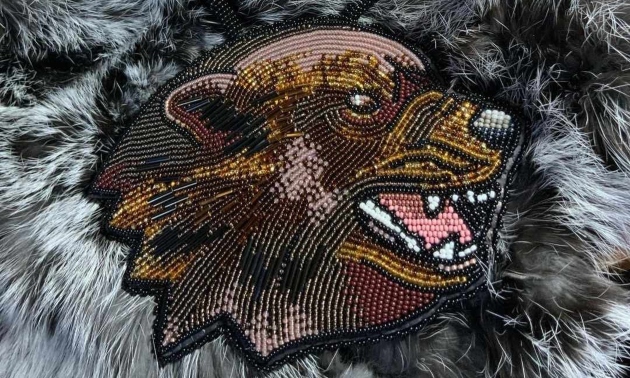
- Photo courtesy Darcy Roshau
Can you describe the significance of beadwork in Ktunaxa culture and how it influences your designs?
Beadwork has been around for millennia, pre-contact, my ancestors would create intricate designs using quills, beads made from seeds, clay, etc. I really believe it was a way to express themselves. Post-contact, they were given glass beads, which they could use for more intricate and colourful designs. Ktunaxa beadwork styles vary from geometric, to plant-like designs. I love floral and plant like designs, and I do like to use elements from beadwork in historical photos to really keep that going.
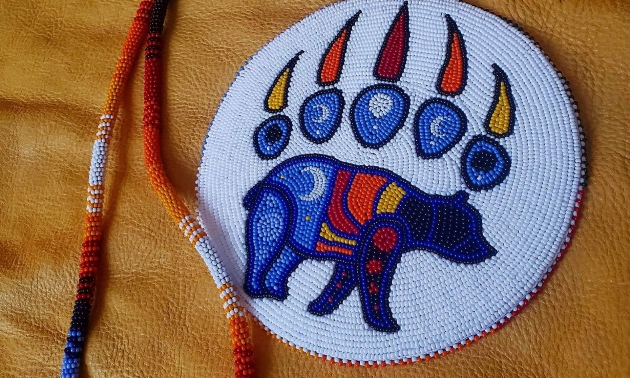
- Photo courtesy Darcy Roshau
How do you approach the process of creating a new piece of beadwork, from concept to completion?
My process is a little different depending on if the item I’m making is a custom order or if it’s just something I want to make. For custom orders, I ask the client what they’re looking for, if they have any elements they want included, (colours, plants, animals etc.,) and then I do a couple of draft sketches and make adjustments from here. I start by beading the outline of the design, then filling in the colours, and then I work on the background. Once all the flat beadwork is finished, I add a backing (I use a black satin) onto the back side to hide all my threads, and then I bead around the edges of the piece. Findings are added at this point. Then I package it up nicely, and it’s off to its new home!
What materials do you prefer to use in your beadwork, and why?
I use many many materials for my work. I use a thick interfacing to bead onto. For beads I use Czech, miyuki, delica, and/or charlotte seed beads. These beads are very uniform in size and shape and so they create a beautiful piece. I like using black satin for the back of my work, it gives it a nice clean look - most beadwork artists use buckskin or faux leatherette, and I do use buckskin sometimes but the satin really saves my hands, it’s a lot easier to work with.
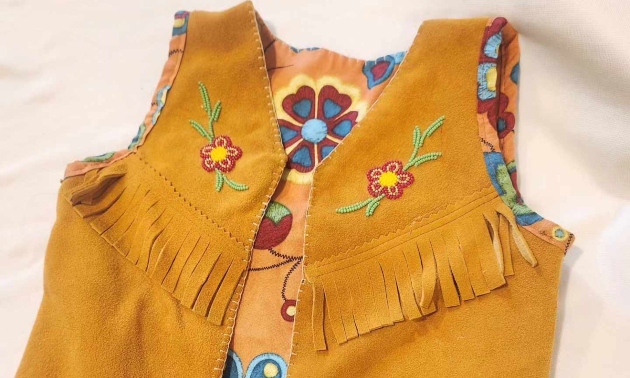
- Photo courtesy Darcy Roshau
Can you share the story behind one of your favorite beadwork pieces?
I don’t think I can pick just one favourite, as I love most of them, but I think my most memorable was the beaded buckskin vest I created for a good friend of mine this year. He wanted the vest to include design elements from his late grandmothers work. So I studied her work, and I took some of her floral design elements and designed this vest with my own spin. It took me around 100 hours to complete this vest, but it turned out so beautifully, and my friend loves it.
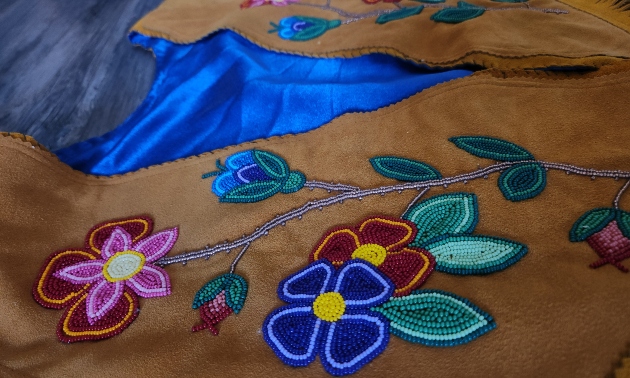
- Photo courtesy Darcy Roshau
What challenges have you faced as a Ktunaxa artist and business owner?
I think the biggest challenge I have faced in my business is educating people on the difference between cultural appropriation and cultural appreciation. Many non-indigenous people think it’s not appropriate or they’re not allowed to wear indigenous beadwork, but that’s the furthest thing from the truth. As long as it is “Indigenous made” and not “Indigenous inspired” and you’re supporting indigenous people and communities, please wear all the beadwork you like!
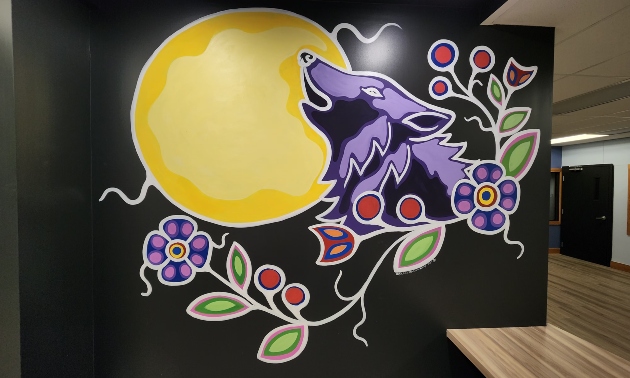
- Photo courtesy Darcy Roshau
How do you market your beadwork to reach both local and wider audiences?
I try to market mostly toward locally, but it’s always great when my work goes far! Social media really helps me market my work both locally and to wider audiences, but more often than not, my clients are locals and I’m quite happy with that.
Can you discuss any collaborations you've had with other artists or businesses?
Most of my collaboration work has been with logo designs such as the Bringing the Salmon Home initiative, whose logo includes 3 artists' work, but as for beadwork, I’ve done a medallion out of a design that a cousin of mine created, and my best friend and I design beadwork together very often.
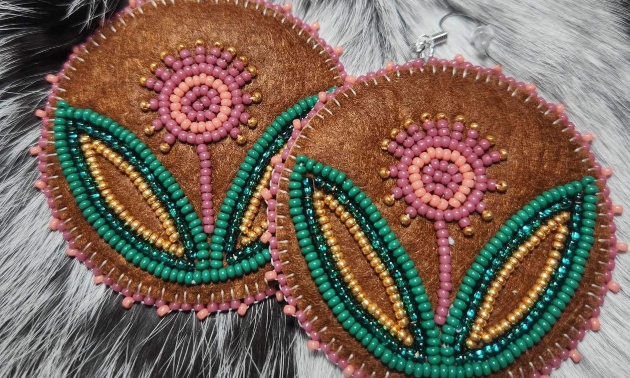
- Photo courtesy Darcy Roshau
How do you see the future of Cedar and Pine Design, particularly in terms of expansion or new product offerings?
I wouldn’t say I’ll be expanding any time soon, I’m quite busy with everything I have on the go currently, but in a few years I’d like to make Cedar and Pine Design my full-time job and be able to create more and maybe offer new products.
How do you stay inspired and continuously find new ideas for your art?
Social media really helps for inspiration, seeing what other artists are creating, different techniques, etc., but mostly I love to look at historical photos of Ktunaxa beadwork and keep my designs similar to that of my ancestors.


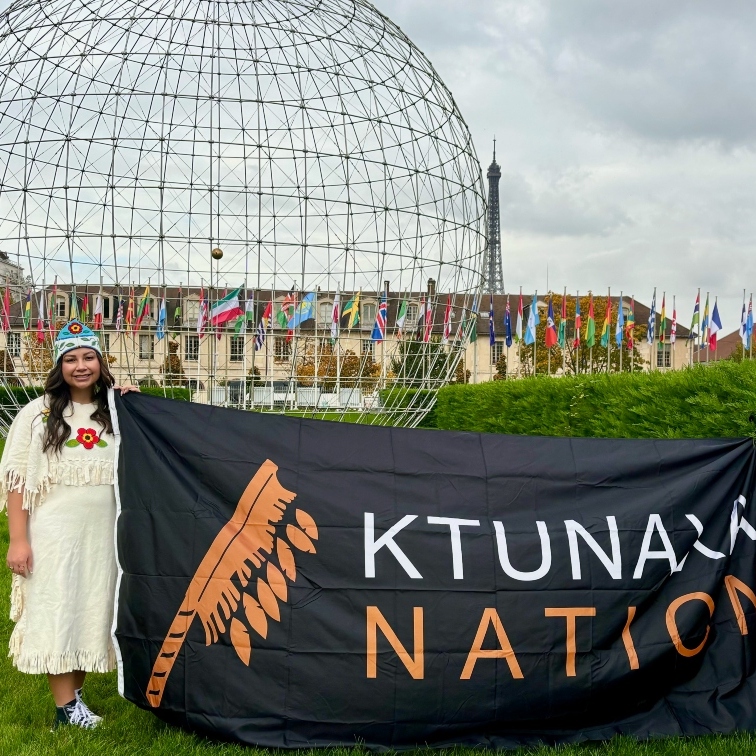


Comments